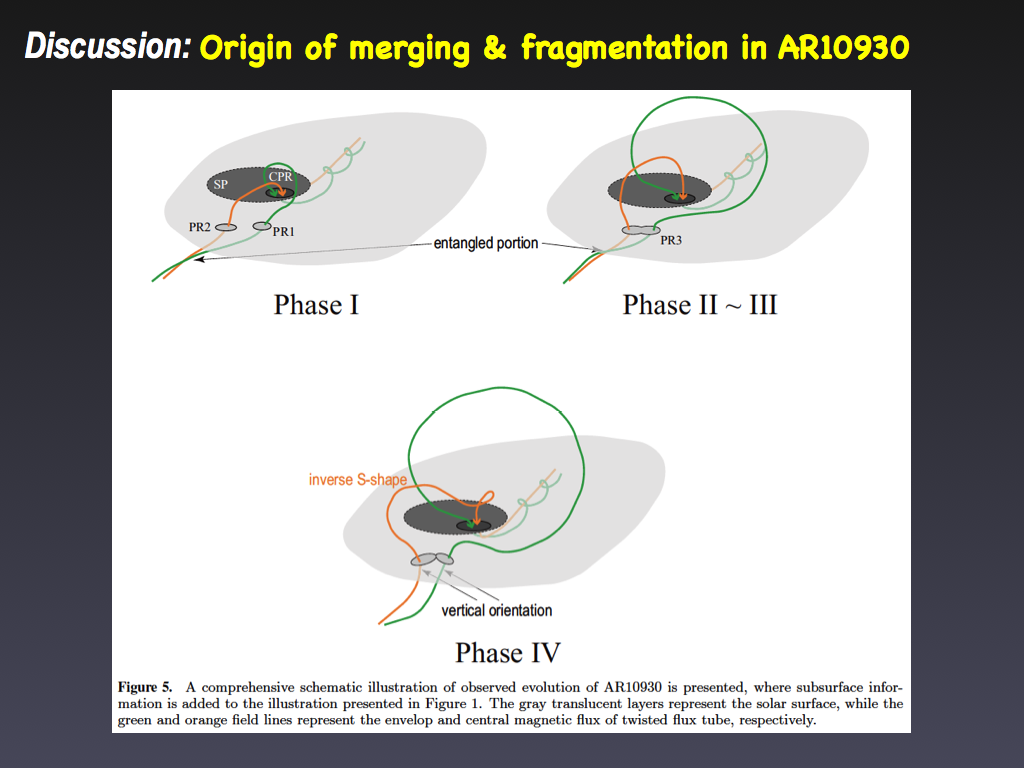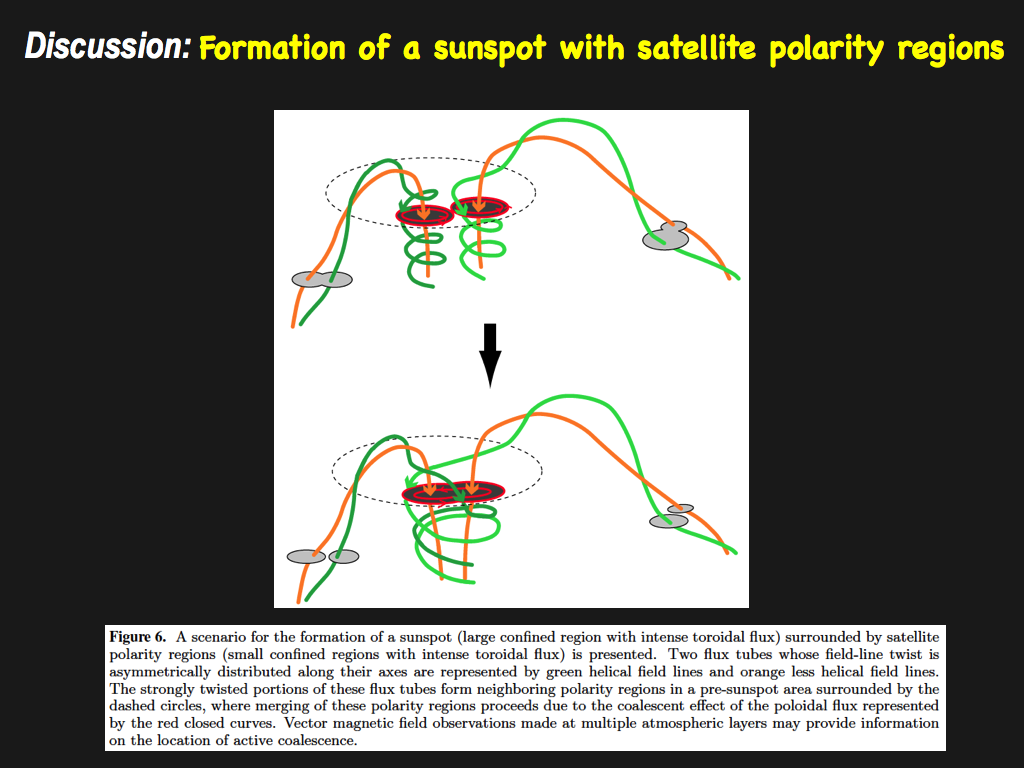Merging and Fragmentation in the Solar Active Region 10930 Caused by an Emerging Magnetic Flux Tube with Asymmetric Field-Line Twist Distribution along Its Axis
In order to clarify origins of the merging and fragmentation of photospheric magnetic polarity regions (MPRs) that led to coronal eruption accompanied by a flare in Active Region 10930, we constructed a magnetohydrodynamic model of the AR based on flux emergence. A key feature of this model is that field-line twist of an emerging flux tube was asymmetrically distributed along its axis. While emerging to a solar surface (photosphere), weakly twisted part of the flux tube was subjected to partial splitting, producing separate MPRs in the photosphere. As the emergence proceeded, these separate MPRs started to merge and then broke up, while in the corona flux rope and sigmoidal structure were formed. When the flux rope erupted, a current layer appeared below the erupting flux rope, where magnetic field locally had a deep V-shaped configuration reminiscent of the anti-parallel magnetic field configuration. We discussed possible physical processes involved in the characteristic evolution of MPRs that leads to forming the magnetic structure of a major sunspot surrounded by small sunspots (satellite MPRs).
Reference
Magara, T.
Journal of the Korean Astronomical Society, 52, 89
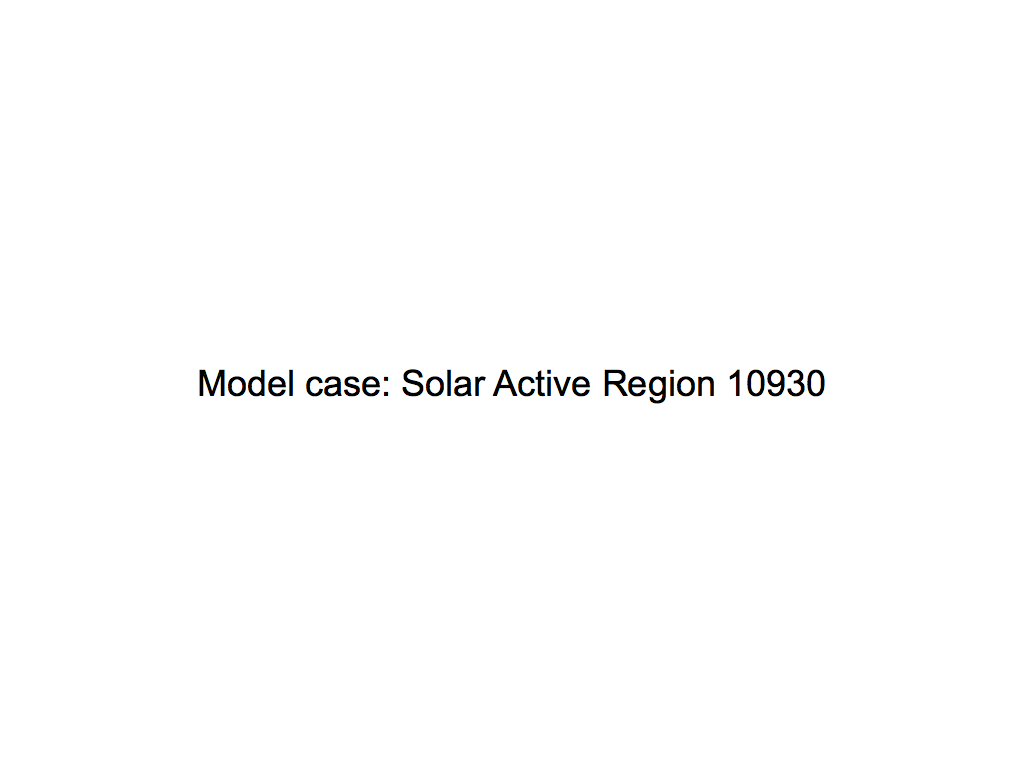
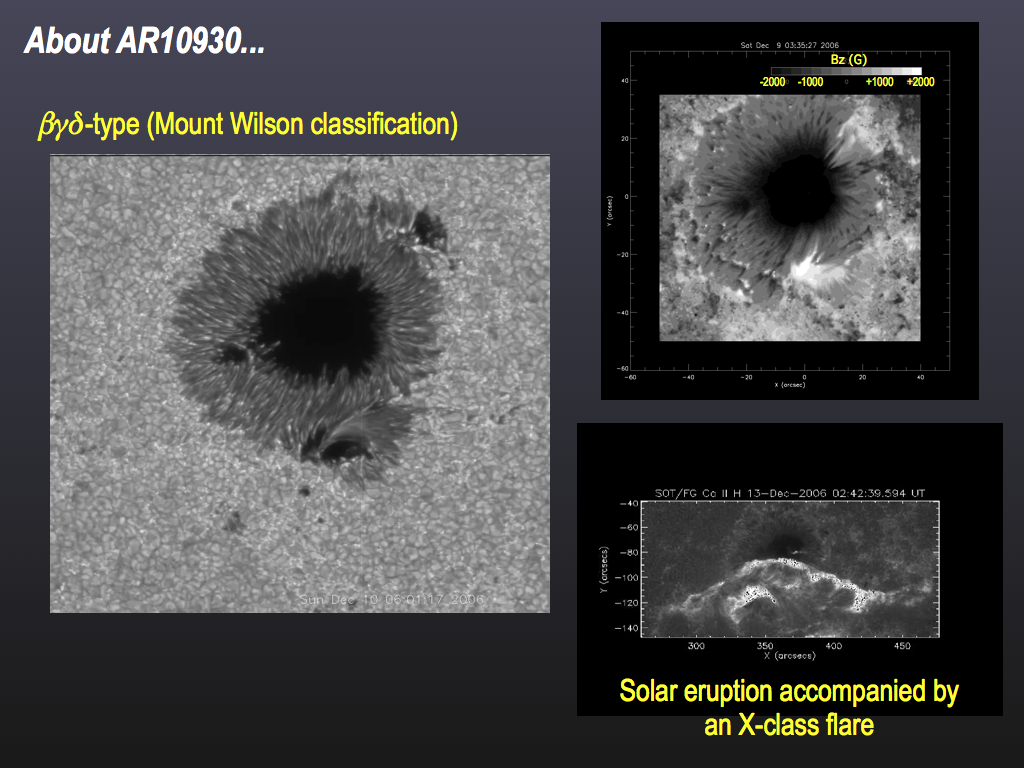
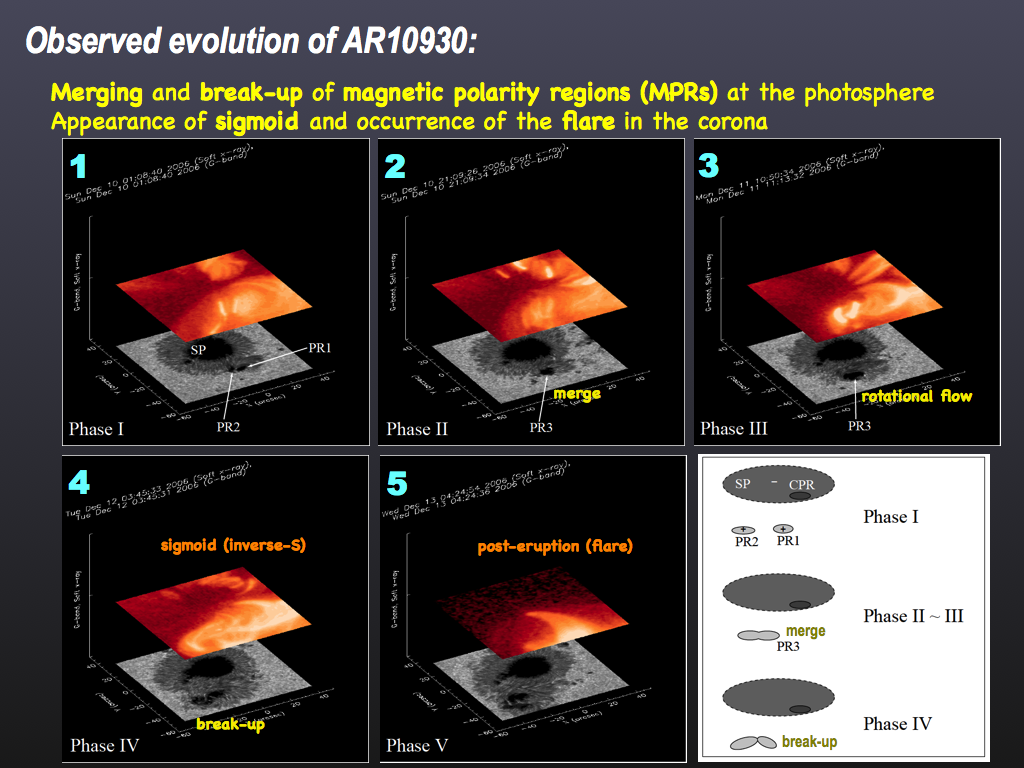
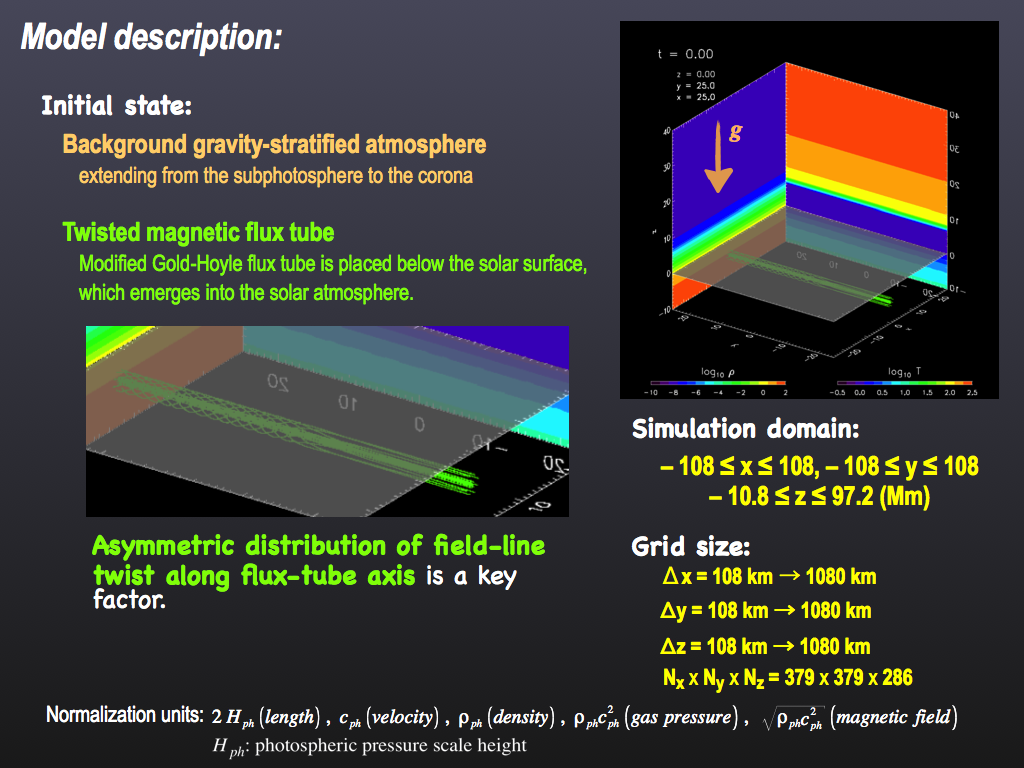
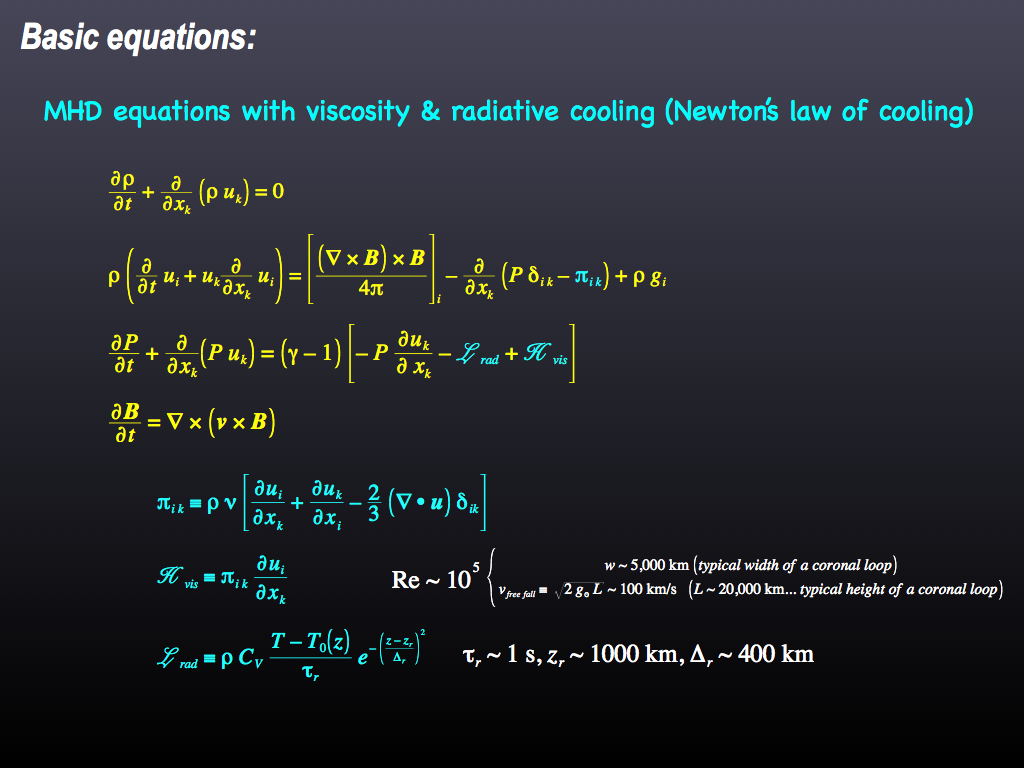
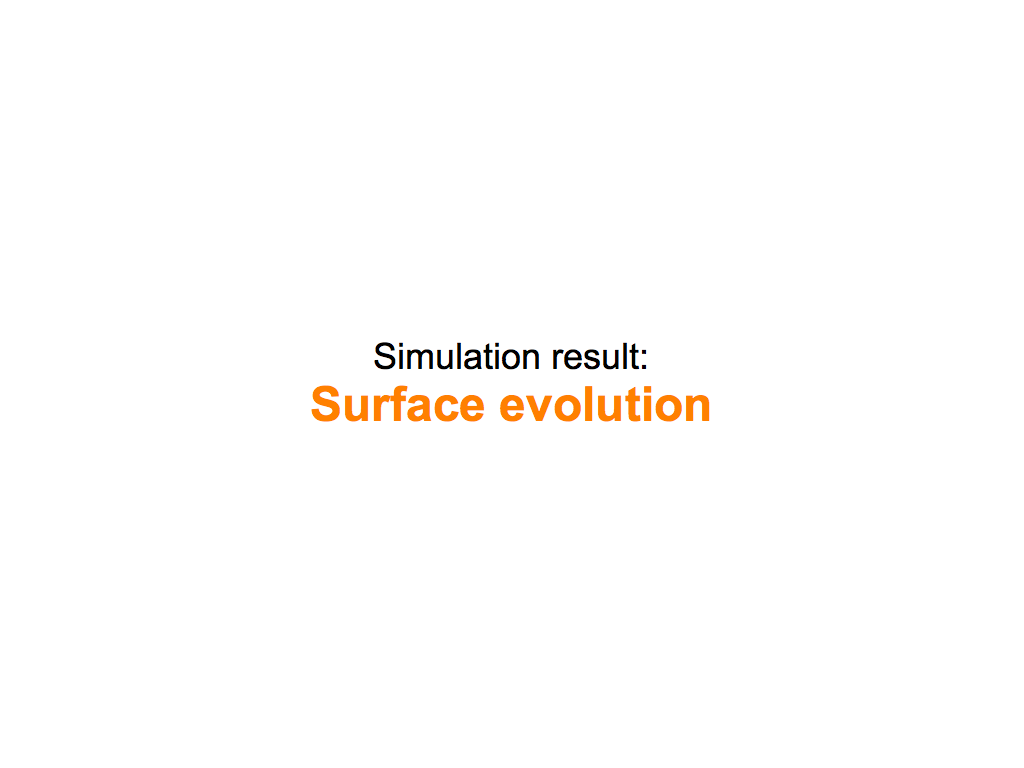
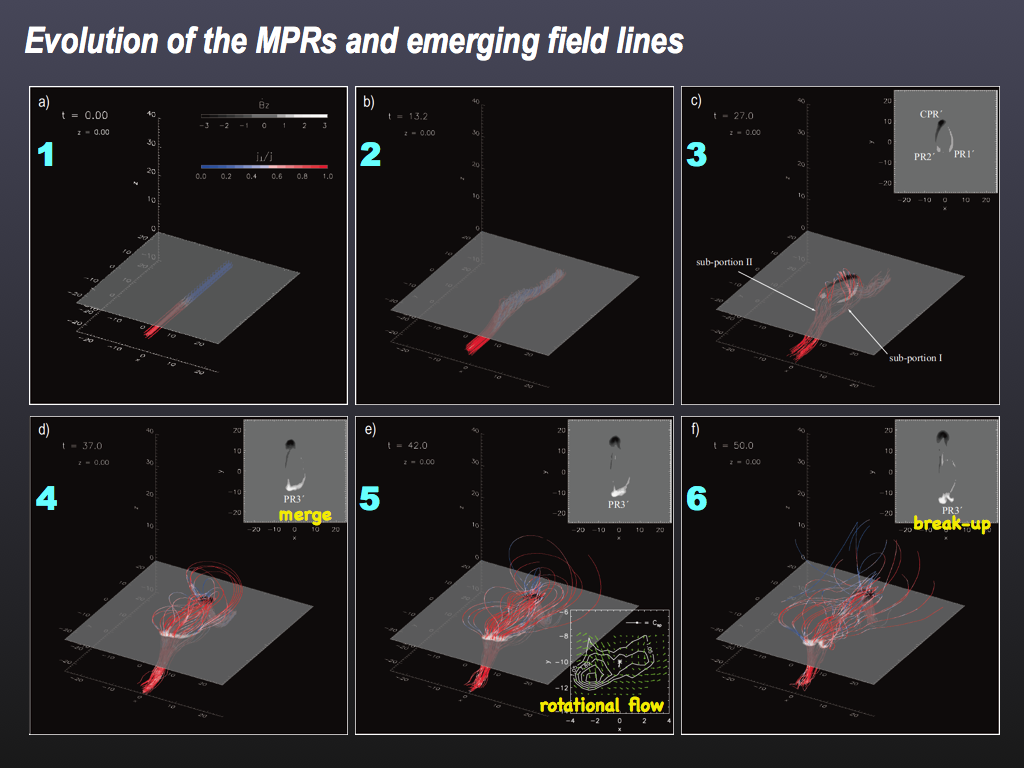
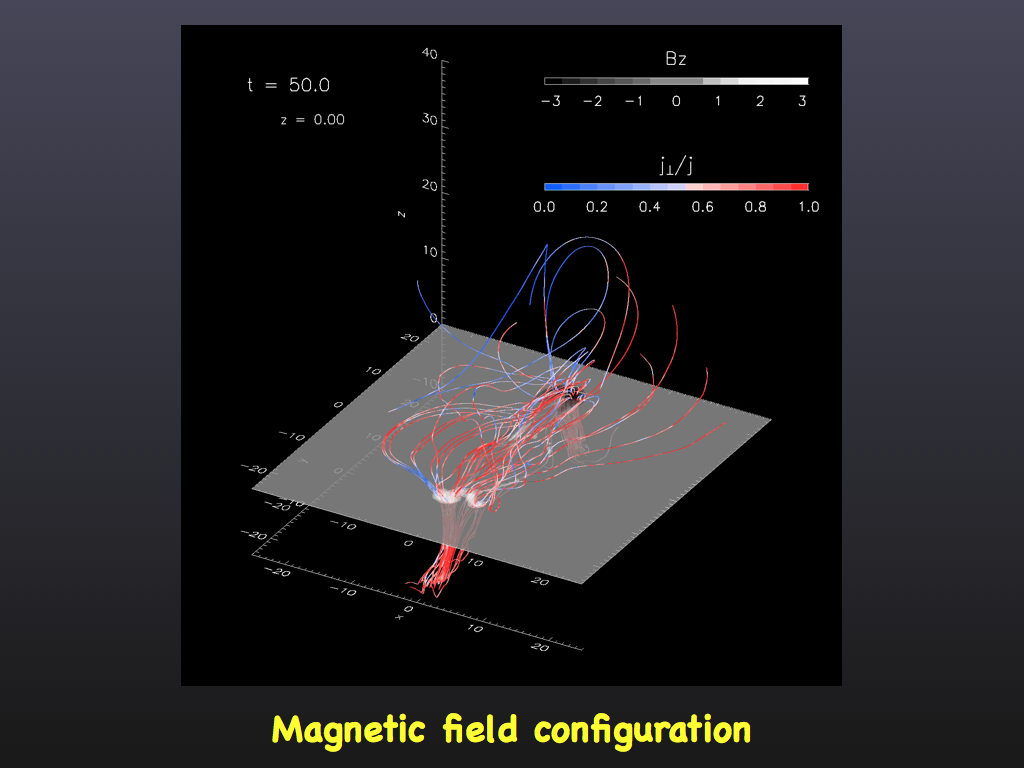
movie
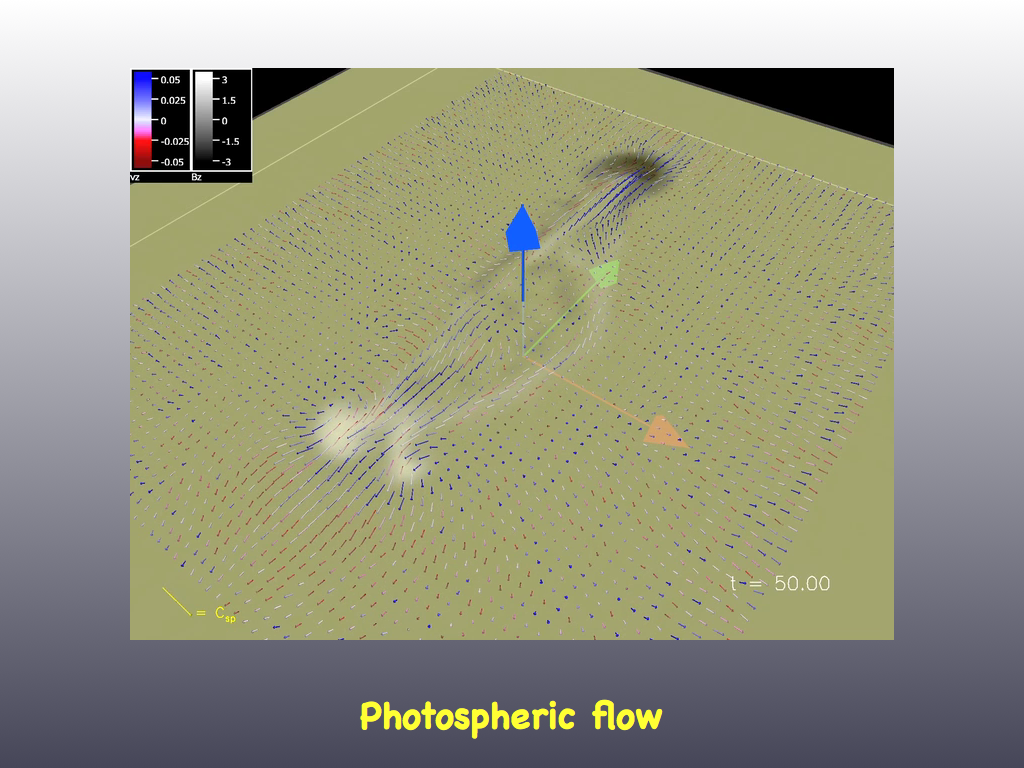
movie (Yellow arrow represents photospheric sound speed.)
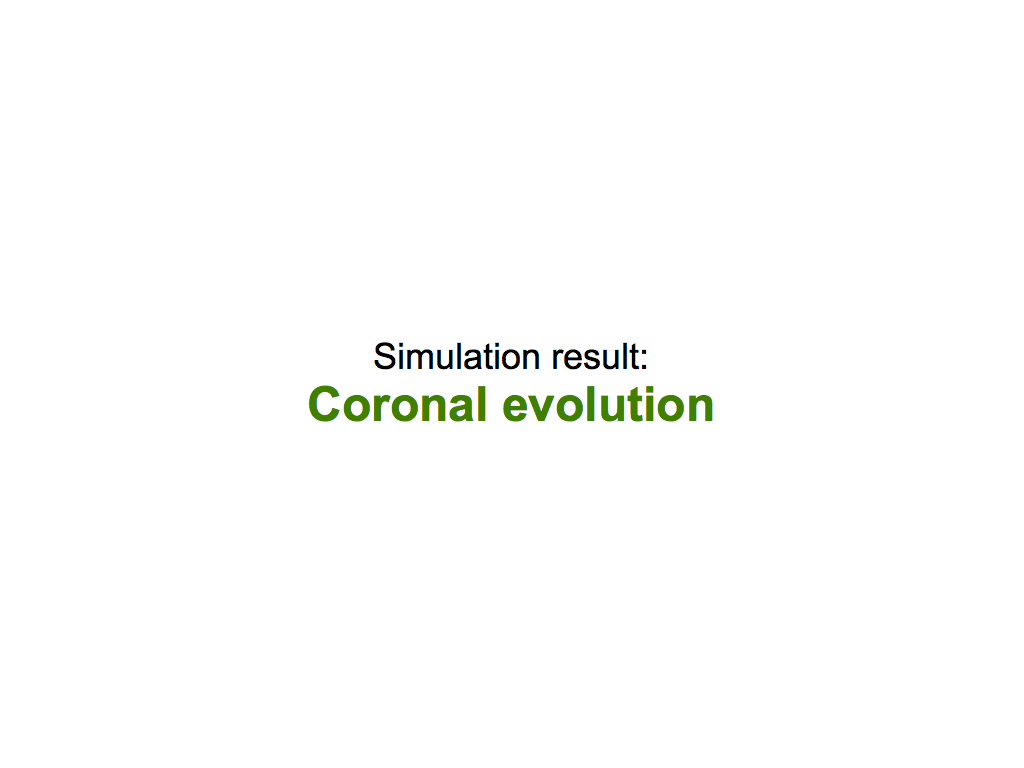
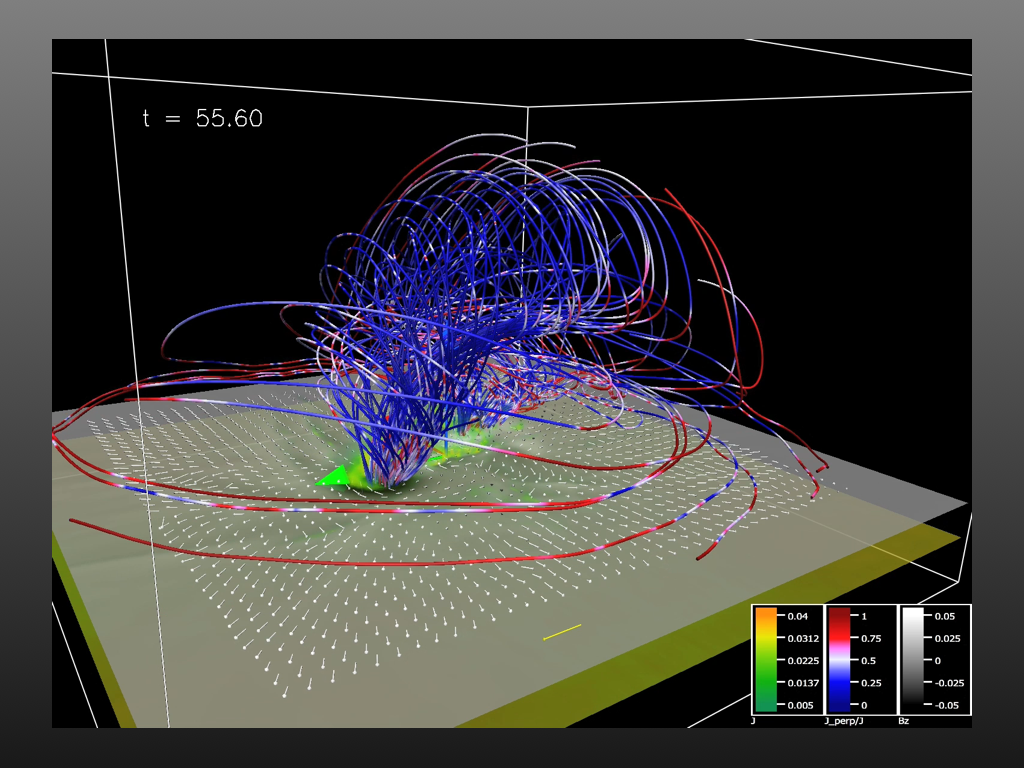
movie
(Yellow layer represents the photosphere, while gray layer corresponds to the bottom of the corona. Yellow arrow represents 10 × photospheric sound speed.)
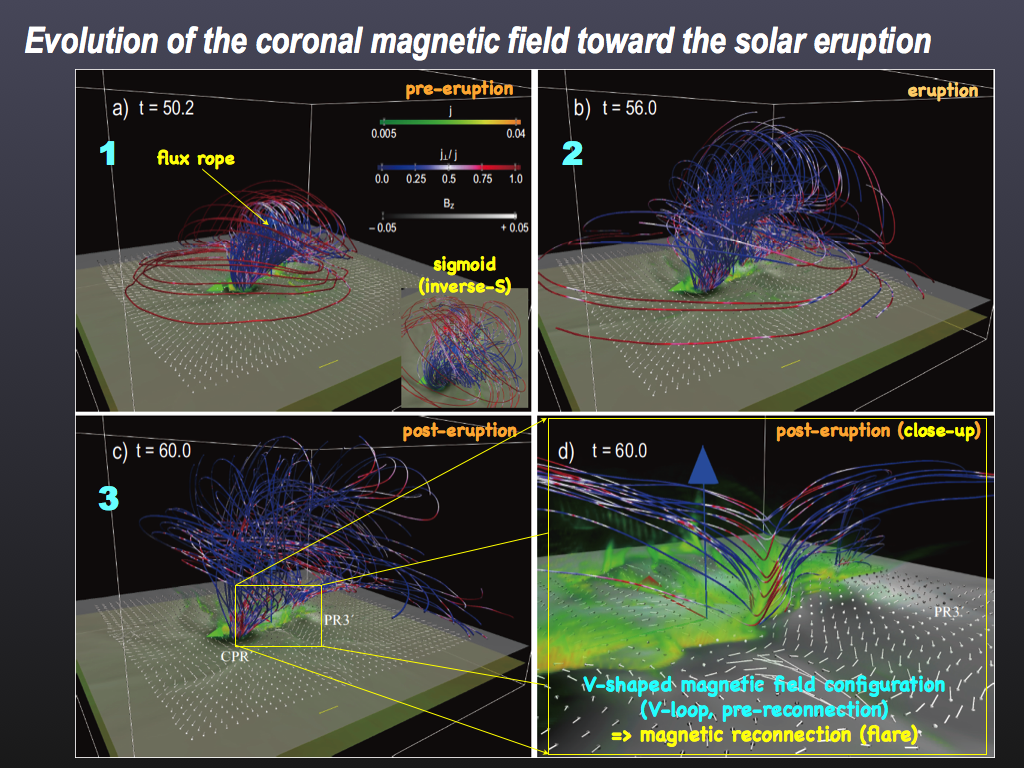
Yellow layer represents the photosphere, while gray layer corresponds to the bottom of the corona.
